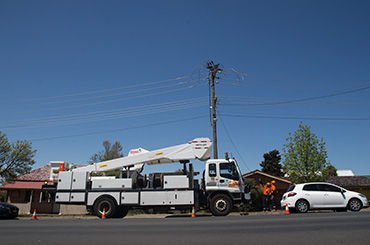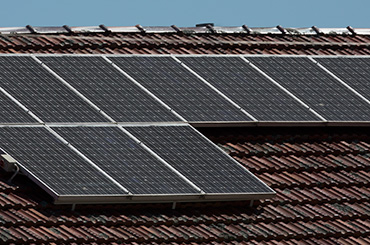
A resilient and flexible network to satisfy changing energy needs
At Essential Energy, we’re proactively collaborating across the energy industry with regulators, retailers, technology suppliers, industry groups and public interest advocates to understand the impact of changing customer expectations on generation and distribution.
We’re also engaging directly with customers to support their increasing choices in individual, community and peer-to-peer electricity generation and usage.
By working closely with our communities and stakeholders, as well as focusing continual improvement, we aim to empower communities to share and use energy for a better tomorrow. Here are some examples of innovation across our network area.
SµRF's up!
As part of the Southcoast Microgrid Reliability Feasibility (SµRF) project, Essential Energy is helping the communities of the Eurobodalla develop a resilient and reliable clean energy future.
Microgrids, or community-scale energy system, link individual solar systems and potentially large-scale solar farms with community batteries. The microgrids can then function in isolation of the network in the event of a power outage.
By participating in the project, Essential Energy will develop data-driven knowledge on how microgrids could improve the stability of the network and be part of the solution to increase the resilience of our network for communities’ benefit.
Stand Alone Power Systems (SAPS) for Bushfire Response
Natural hazard events such as bushfires have significant implications for customers as well as the electricity network. The importance of a resilient network will continue to be a focus with the severity and frequency of extreme weather events predicted in Australia over the coming years. The supply of power during these times is important to help communities recover from these types of events.
Following the devastating 2019 bushfires we have deployed Stand Alone Power Systems (SAPS) as part of the efforts to restore supply to customers affected by these events. Learnings from the 2019 emergency response effort have been used to develop standard SAPS options to provide electricity to customers in remote areas of our network where the cost of rebuilding the damaged electricity network is high and where customers can be serviced by a SAPS.
Read more about Stand Alone Power Systems
Evolve DER Project
The Evolve DER project aims to increase network hosting capacity of Distributed Energy Resources (DER) by maximising participation in energy, ancillary and network service markets, while ensuring the secure technical limits of electricity networks are not breached.
How the project works
We are collaborating with industry and academia on the Australian Renewable Energy Agency (ARENA) funded evolve DER project. Through multiple demonstrations and trials the evolve project will develop new algorithms and capabilities to identify and ease congestion within the distribution network.
The project will develop foundational capabilities in orchestration of DER and enable us to maximise the hosting capacity of the network, opening access to increased DER export while maintaining a safe and reliable network.
Network Visibility Trial Program
Considerable change to the energy sector is arising due to a combination of technological and customer change. This is transforming how electricity is produced and used.
The increase of DER such as solar PV, Energy Storage and Electric Vehicles can have an immediate impact on the way the electricity network functions, dependent on the time of day these resources are used.
Increasing the visibility of our network and how DER is impacting the network will assist us in understanding the demand placed on the network, as well as facilitating platforms which allow us to offer greater energy options and participation opportunities for our customers. This includes schemes where DER owners can opt in to ‘network support’ services for financial reward, and provide freedom in terms of generator (and load) sizes which customers can connect to the network (provided management schemes are implemented). These rely on the implementation of network visibility capabilities, which are currently being investigated through a trial program.
The Network Visibility Trial Program aims to establish what what level the network can host DER, and still allow for dynamic network management at the lowest possible cost. The overall objective is to enable greater network flexibility and resilience. The trial includes:
- Identification of network constraints to enable effective management of quality of supply to customers, capex prioritisation and visibility of opportunities for connection to the network at a lower cost.
- Outage identification and management - using information from a variety of sensors on the network, investigate options available to improve the identification and reporting of customer outages, improving restoration times, safety and lowering the cost to customers.



